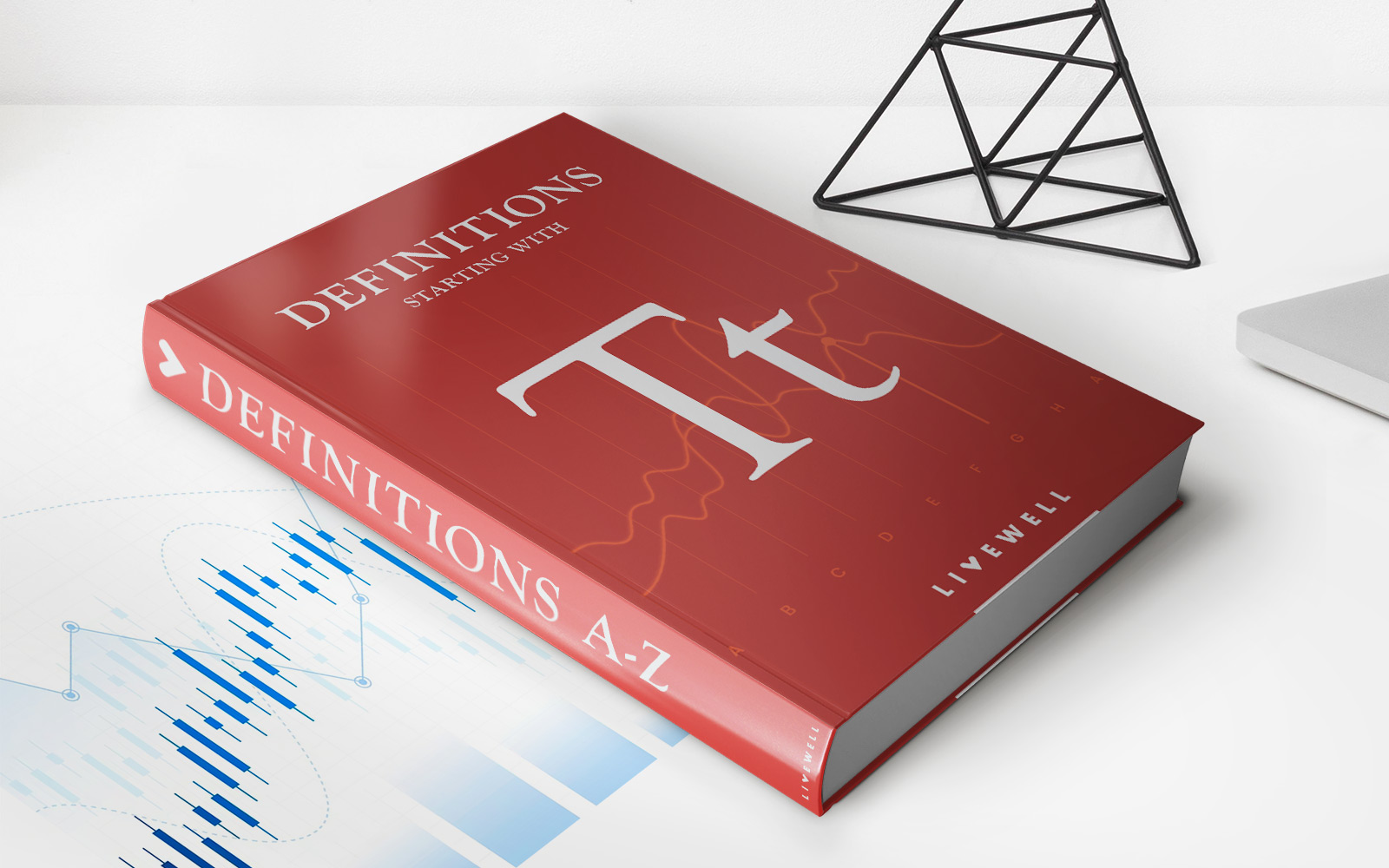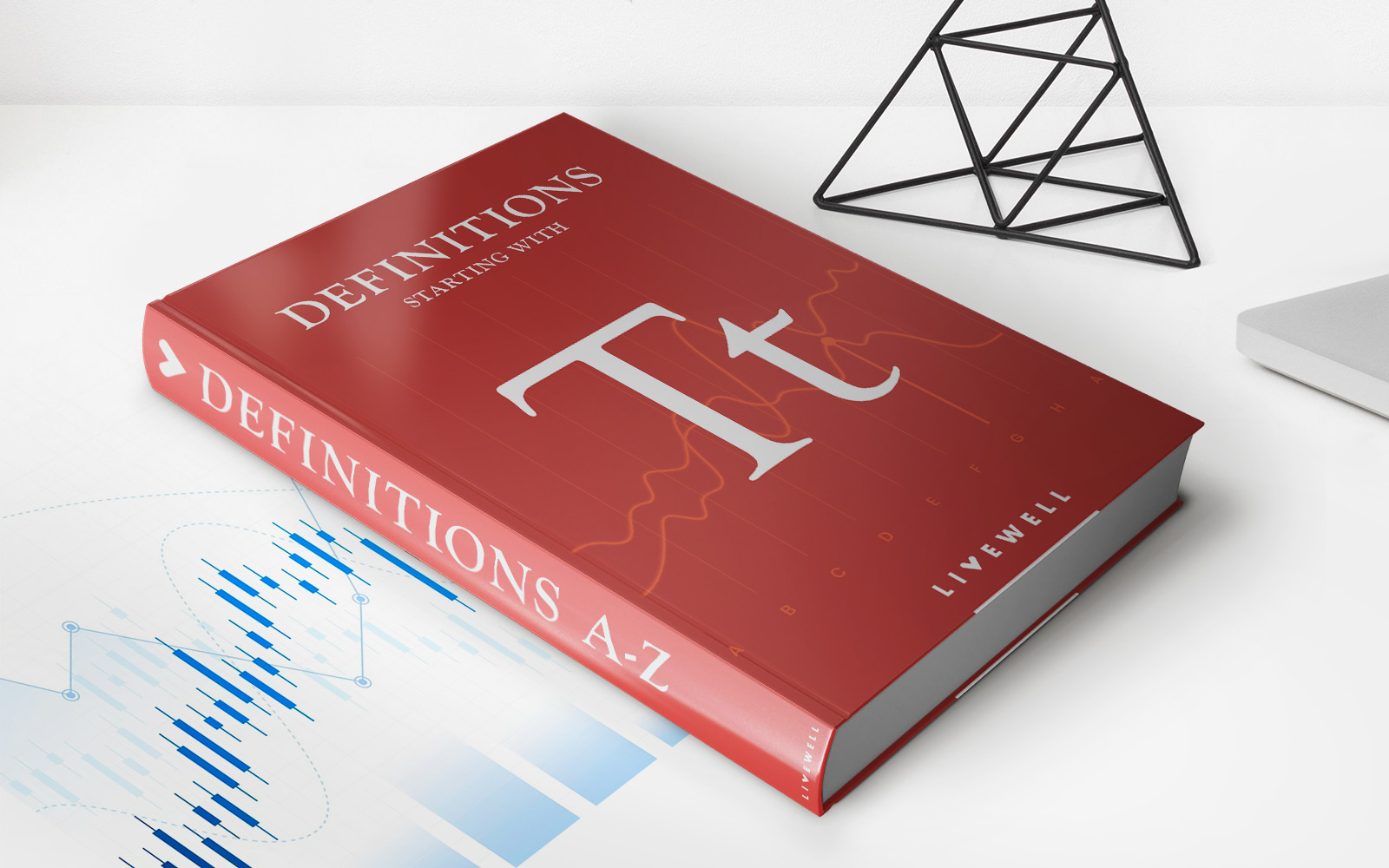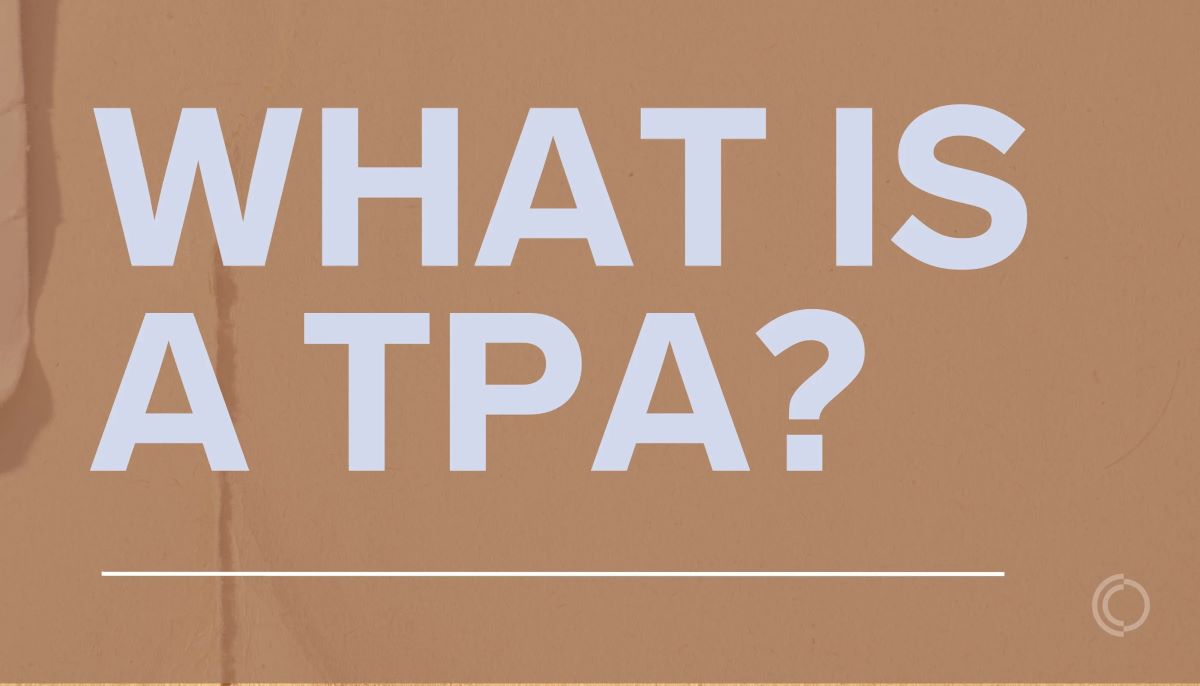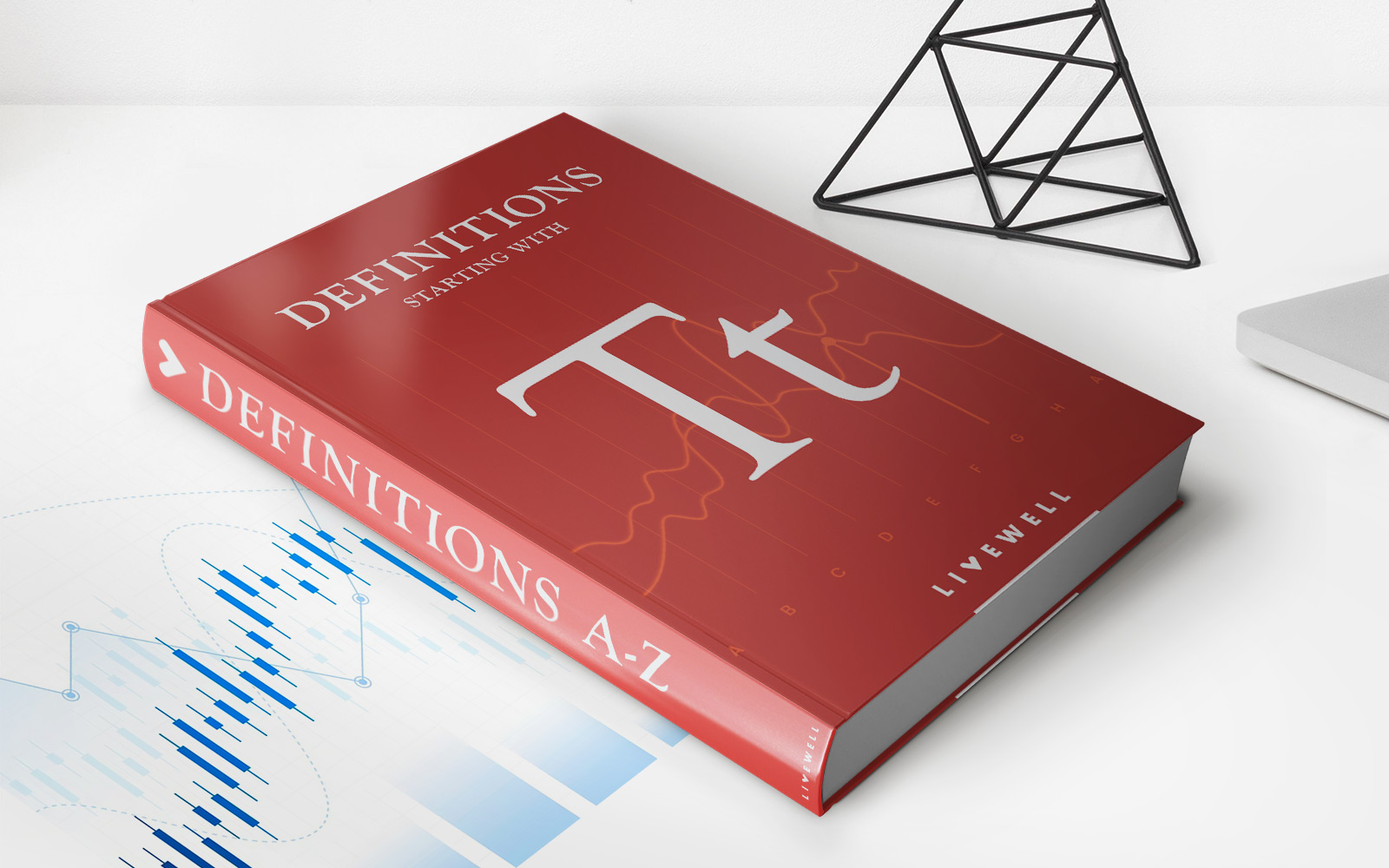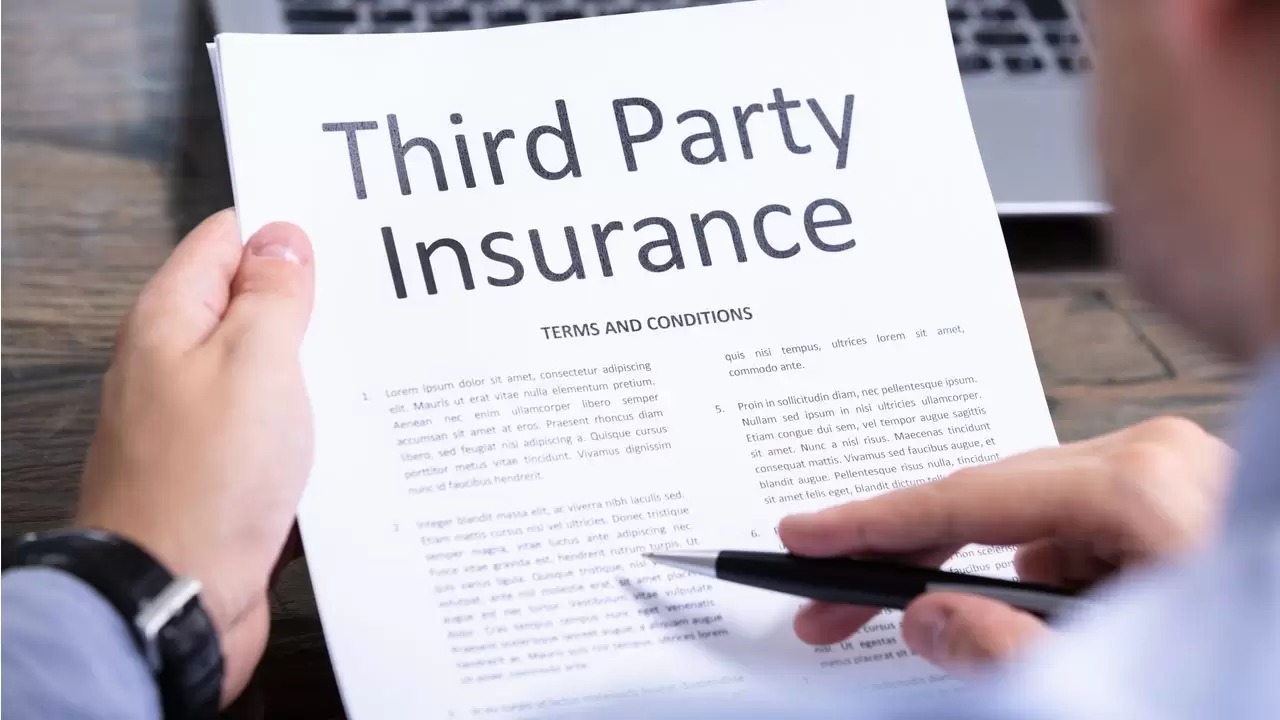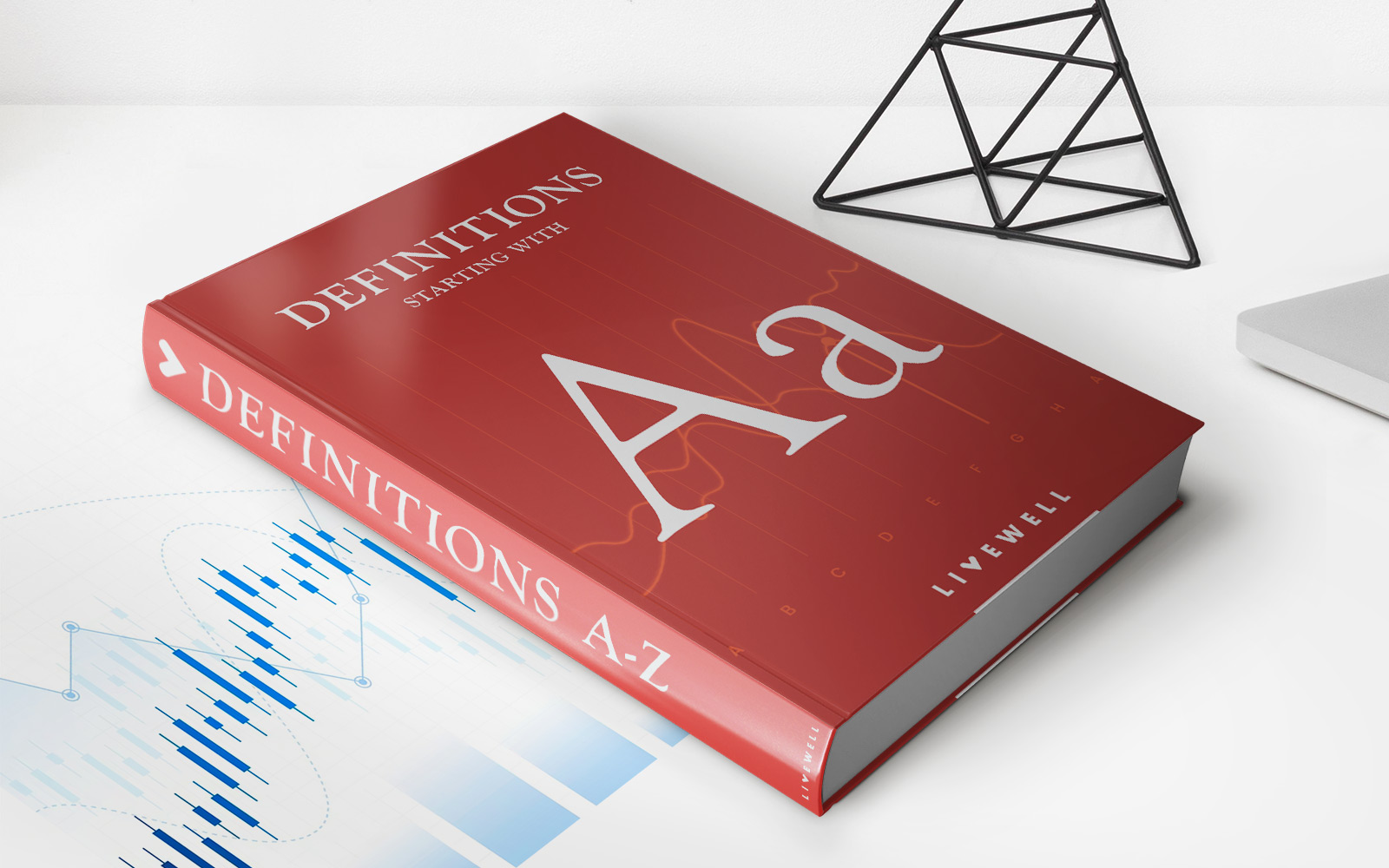

Finance
Who Is The Third Party In Insurance
Modified: February 21, 2024
Learn about the role of third-party in insurance, how it affects your finances, and find out who is the third party in the insurance industry.
(Many of the links in this article redirect to a specific reviewed product. Your purchase of these products through affiliate links helps to generate commission for LiveWell, at no extra cost. Learn more)
Table of Contents
- Introduction
- Understanding Insurance
- Parties Involved in Insurance
- Definition of Third Party Insurance
- Importance of Third Party Insurance
- Types of Third Party Insurance
- Coverage and Benefits of Third Party Insurance
- Claims and Limitations of Third Party Insurance
- How Third Party Insurance Works
- Common Misconceptions about Third Party Insurance
- Comparing Third Party Insurance with Other Types of Insurance
- Conclusion
Introduction
Welcome to the world of insurance, where risk is managed and peace of mind is provided. Insurance is an important financial tool that helps individuals and businesses protect themselves against unexpected events and losses. It offers a safety net and a sense of security when faced with uncertain situations.
When it comes to insurance, there are different parties involved – the insured, the insurer, and the third party. While the insured and the insurer are well-known entities, the role of the third party may often be overlooked or misunderstood. In this article, we will delve deeper into the concept of third party in insurance and explore its significance in the realm of financial protection.
Understanding the concept of third party in insurance is crucial because it has a direct impact on the coverage and benefits you receive. Whether you’re insuring your car, property, or business, having a clear understanding of the parties involved will help you make informed decisions and choose the right insurance policies.
In the following sections, we will define third party insurance, highlight its importance, discuss its different types, explore the coverage and benefits it offers, and address common misconceptions associated with this form of insurance. By the end of this article, you’ll have a comprehensive understanding of third party insurance and how it fits into the larger insurance landscape.
Understanding Insurance
Before we dive deep into the concept of third party insurance, it’s important to have a solid understanding of insurance itself. At its core, insurance is a contract between the insured, who is seeking protection, and the insurer, who provides financial coverage in exchange for premiums.
The purpose of insurance is to transfer the risk of loss from the insured to the insurer. In other words, it provides a safeguard against unexpected events that may result in financial hardship. By paying regular premium payments, individuals and businesses can transfer the financial consequences of certain risks to an insurance company, allowing them to focus on their daily lives and operations without constant worry.
Insurance operates on the principle of pooling. The premiums collected from a large number of policyholders are used to compensate the losses suffered by a few policyholders who have experienced an insured event. This spreading of risk helps to stabilize the financial impact of unforeseen events and allows insurance companies to provide coverage at an affordable cost.
Insurance covers a wide range of areas, including health, life, property, liability, and more. Different types of insurance policies cater to the diverse needs and risks faced by individuals and businesses. It’s important to note that insurance policies come with specific terms and conditions, known as policy provisions, which outline what is covered, what is excluded, and the limits of coverage.
Now that we have a general understanding of insurance, let’s explore the parties involved in the insurance process and their roles in more detail.
Parties Involved in Insurance
Insurance involves several parties, each playing a distinct role in the process. Understanding these parties and their responsibilities is crucial for anyone seeking insurance coverage. Let’s take a closer look at the key players in the insurance ecosystem:
- Insured: The insured refers to the individual or entity seeking insurance coverage. This can be an individual, a business, or even a government entity. The insured pays premiums to the insurer in exchange for financial protection against specified risks.
- Insurer: The insurer is the insurance company that provides coverage to the insured. They analyze the risks associated with the insured and determine the premium amount based on factors such as the type of coverage, the level of risk, and the insured’s history. The insurer is responsible for managing and paying out claims as per the terms outlined in the insurance policy.
- Insurance Agent/Broker: Insurance agents or brokers act as intermediaries between the insured and the insurer. They help individuals and businesses navigate the complexities of insurance, assess their coverage needs, and recommend suitable policies. Agents typically work for specific insurance companies, while brokers are independent professionals who work with multiple insurers to offer a wider range of options.
- Underwriter: Underwriters are employed by insurance companies to assess the risk associated with a particular insurance policy. They evaluate the information provided by the insured and determine whether to accept or decline the risk. Underwriters also set the premium rates based on their evaluation of the risk involved.
- Third Party: Finally, we come to the third party, which is the focal point of this article. The third party is an individual or entity that is not directly involved in the insurance contract but can be affected by the insured’s actions. They may suffer loss or damage as a result of an incident caused by the insured. Third parties can include individuals, other vehicles, property owners, or even pedestrians.
Now that we have a clear understanding of the parties involved in the insurance process, let’s explore the concept of third party insurance in detail.
Definition of Third Party Insurance
Third party insurance, also known as liability insurance, is a type of insurance coverage that protects the insured against claims made by a third party for damage, injury, or loss caused by the insured’s actions or negligence. It provides financial coverage for legal liabilities arising from incidents where the insured is legally responsible for causing harm to a third party.
In simpler terms, third party insurance protects the insured from the financial consequences of being held legally liable for causing harm to someone else or their property. It safeguards the insured against potential lawsuits and the associated legal costs, settlements, or judgments.
Third party insurance typically comes into play when the insured is involved in an accident or incident where they are at fault, and as a result, a third party suffers injury, damage, or loss. This can include scenarios such as a car accident where the insured driver is responsible for damaging someone else’s vehicle, a business liability claim where a customer is injured on the insured’s premises, or a property damage claim where the insured accidentally damages someone’s property.
It’s important to note that third party insurance covers only the liabilities of the insured towards third parties and does not provide any direct benefits to the insured themselves. The purpose of this insurance is to protect the insured from the financial repercussions of their actions that may negatively impact others.
Now that we have defined third party insurance, let’s explore why it is an essential form of insurance coverage for individuals and businesses.
Importance of Third Party Insurance
Third party insurance holds immense importance for individuals and businesses alike. It acts as a safeguard against potential legal and financial liabilities that can arise from causing harm or damage to a third party. Let’s explore some key reasons why third party insurance is crucial:
- Legal Protection: Accidents happen, and when they do, the injured party may seek compensation for the damages they have suffered. Third party insurance provides legal protection by covering the insured’s liability and the associated legal costs. It ensures that the insured is not burdened with hefty legal expenses in the event of a lawsuit.
- Financial Security: Without third party insurance, individuals and businesses may face significant financial consequences if they are held legally responsible for causing injury or damage to someone else’s property. The costs of medical bills, property repairs, or legal settlements can be overwhelming. Third party insurance offers financial security by covering these expenses so that the insured’s personal or business assets are not at risk.
- Peace of Mind: Knowing that you have third party insurance provides peace of mind. It allows individuals and businesses to go about their daily activities without constant worry about potential accidents or incidents that may harm others. With third party coverage, they can focus on their personal or business endeavors, knowing that they are protected financially if an unfortunate event occurs.
- Compliance Requirements: In many jurisdictions, having third party insurance is mandatory for certain activities or operations. For example, drivers are often required to have third party car insurance to legally operate their vehicles. Businesses may also need liability insurance to comply with regulatory requirements or to enter into contracts with other parties.
Whether you are an individual or a business owner, having third party insurance is a responsible and sensible choice. It allows you to conduct your personal or business affairs with confidence, knowing that you are protected from potential legal and financial pitfalls. The peace of mind and financial security provided by third party insurance make it an essential component of a comprehensive insurance portfolio.
Next, we will explore the different types of third party insurance coverage available to cater to various needs and risks.
Types of Third Party Insurance
Third party insurance comes in various forms to cater to different needs and risks. Here are some common types of third party insurance coverage:
- Third Party Liability Insurance: Third party liability insurance is the most basic form of third party coverage. It protects the insured against legal liabilities arising from bodily injury or property damage caused to a third party. This type of insurance is commonly associated with automobile insurance, where it covers the insured’s liability for injuries sustained by others or damage caused to other vehicles or property in an accident.
- Public Liability Insurance: Public liability insurance is intended for businesses and provides coverage for claims made by third parties who suffer injury or property damage due to the business operations. It is particularly relevant for businesses that interact with the public, such as shops, restaurants, or event organizers. Public liability insurance helps protect businesses from the financial consequences of accidents or incidents that occur on their premises or as a result of their activities.
- Professional Indemnity Insurance: Professional indemnity insurance is designed for professionals who provide services or give advice to clients. It covers the insured’s liability for professional negligence, errors, or omissions that result in financial loss or damage to a third party. Professionals such as doctors, lawyers, accountants, and consultants often carry professional indemnity insurance to safeguard against potential liability claims arising from their professional practices.
- Product Liability Insurance: Product liability insurance applies to businesses that manufacture or sell products. It provides coverage for claims made by third parties who suffer injury or damage due to a defective or malfunctioning product. Product liability insurance protects businesses from the potential financial liabilities associated with product-related lawsuits, including legal defense costs, settlements, or judgments.
- Employer’s Liability Insurance: Employer’s liability insurance is typically required for businesses that have employees. It covers the employer’s liability for injuries, illnesses, or deaths suffered by employees in the workplace. This insurance provides financial protection against potential employee claims and legal expenses that may arise from work-related accidents or occupational diseases.
It’s important to note that the availability and specifics of third party insurance coverage may vary depending on the insurance company, the jurisdiction, and the specific policy terms. Consulting with an insurance professional will help you understand the types of third party insurance coverage available and determine which ones are most relevant to your needs and circumstances.
Now that we have explored the different types of third party insurance coverage, let’s delve into the coverage and benefits provided by these policies.
Coverage and Benefits of Third Party Insurance
Third party insurance provides coverage and benefits that offer peace of mind and financial protection in the event of liability claims. Let’s explore the key aspects of coverage and the benefits of having third party insurance:
Coverage:
- Bodily Injury: Third party insurance covers the insured’s legal liabilities for bodily injury caused to a third party. If the insured’s actions result in physical harm to someone else, the insurance policy will cover the medical expenses, rehabilitation costs, and potential compensation to the injured party.
- Property Damage: Damage to another person’s property caused by the insured is also covered by third party insurance. Whether it’s a car accident resulting in damage to another vehicle or accidental damage to someone’s property, the policy will cover the costs of repairs, replacement, or compensation to the affected third party.
- Legal Expenses: Third party insurance also covers the insured’s legal expenses in the event of a liability claim. This includes legal defense costs, court fees, and any settlements or judgments that may need to be paid to the injured party.
Benefits:
- Financial Protection: One of the main benefits of third party insurance is its ability to provide financial protection against potential liability claims. The insurance coverage ensures that the insured does not have to bear the burden of paying for medical bills, property repairs, legal expenses, or court-awarded compensation out of pocket.
- Peace of Mind: Knowing that you have third party insurance offers peace of mind. It allows you to go about your daily activities without constant worry about potential accidents or incidents that may result in financial liability. With insurance coverage, you can focus on your personal or business endeavors with the confidence that you are protected.
- Compliance: Many jurisdictions require certain forms of third party insurance coverage, such as third party car insurance, to meet legal requirements. Having the necessary insurance coverage ensures compliance with these regulations and allows individuals and businesses to operate legally.
It’s important to carefully review the terms and conditions of your third party insurance policy to fully understand the scope of coverage and the specific benefits provided. Additionally, consulting with an insurance professional can help you assess your specific needs and determine the appropriate coverage limits to adequately protect yourself against potential liability claims.
Next, let’s discuss the claims and limitations associated with third party insurance.
Claims and Limitations of Third Party Insurance
Third party insurance, like any form of insurance, has its own set of claims processes and limitations. Understanding these aspects is key to ensuring a smooth claims experience and managing expectations. Let’s explore the claims process and limitations associated with third party insurance:
Claims Process:
- Notification: The insured must notify their insurance company as soon as possible after an incident occurs that may give rise to a third party liability claim. Prompt notification ensures that the insurance company can begin the claims process and gather any necessary information.
- Documentation: The insured will be required to provide supporting documentation to initiate the claims process. This may include incident reports, witness statements, photographs, police reports, or any other relevant evidence pertaining to the claim.
- Investigation: The insurance company will conduct an investigation to determine liability and assess the extent of the damages suffered by the third party. This may involve gathering additional information, consulting with experts, or interviewing involved parties.
- Settlement or Litigation: Once liability is established, the insurance company will work towards a settlement with the injured third party. The settlement may involve monetary compensation for medical expenses, property repairs, or any other losses suffered. In some cases, litigation may be necessary if a settlement cannot be reached.
- Claim Payment: If a settlement is reached or a judgment is awarded in favor of the injured party, the insurance company will make payment to cover the compensation amount, up to the policy limits. The insured is responsible for any costs or damages that exceed the coverage limits of their policy.
Limitations:
- Coverage Limits: Third party insurance policies come with coverage limits, which represent the maximum amount the insurer will pay for a liability claim. It’s important for the insured to choose appropriate coverage limits to ensure that they are adequately protected in the event of a significant claim.
- Exclusions: Like other insurance policies, third party insurance has exclusions. These are specific circumstances or events that are not covered under the policy. Common exclusions may include intentional acts, criminal activities, or claims arising from certain high-risk activities as defined by the policy.
- Policy Terms and Conditions: The insured must carefully review and understand the terms and conditions of their third party insurance policy. Failure to comply with these terms, such as late notification or non-disclosure of relevant information, may result in the denial of a claim or a reduction in the amount payable by the insurance company.
It’s vital for the insured to maintain open and transparent communication with their insurance company throughout the claims process. Seeking the guidance of an insurance professional can also help navigate any complexities and ensure a smooth claims experience.
Now that we have covered the claims process and limitations, let’s explore how third party insurance works in practice.
How Third Party Insurance Works
Third party insurance serves as a protection mechanism that transfers the financial liability of an insured individual or business to the insurance company. Let’s take a closer look at how third party insurance works:
Purchasing the Policy:
The insured individual or business purchases a third party insurance policy from an insurance company. The policy will outline the coverage limits, deductibles, premiums, and any specific terms and conditions that apply.
Payment of Premiums:
The insured pays regular premiums to the insurance company in exchange for the coverage provided by the third party insurance policy. These premiums may be paid monthly, quarterly, annually, or through any agreed-upon payment schedule.
Eligible Losses:
If the insured causes bodily injury, property damage, or other losses to a third party due to their actions or negligence, the third party can file a claim with the insured’s insurance company. The insurance company will assess the claim, review the policy terms, and determine if the claim falls within the scope of coverage.
Claims Processing:
Once a claim is filed, the insurance company will initiate the claims process. This involves gathering the necessary information, conducting investigations if required, and determining the liability of the insured. If the claim is found to be valid, the insurance company will take the necessary steps to compensate the injured third party according to the terms of the policy.
Settlement and Payment:
If the insurance company and the injured third party reach a settlement, the insurance company will make the agreed-upon payment to cover the losses or damages suffered. The payment will be made up to the coverage limits specified in the policy. In some cases, where a settlement cannot be reached, litigation may be required to determine the liability and the compensation amount.
Policy Renewal and Premium Adjustments:
Third party insurance policies are typically renewed on an annual basis. The insured will need to review their coverage needs, and the insurance company will assess any changes in risk factors. This may result in adjustments to the premiums based on factors such as claims history, changes in business operations, or modifications to coverage requirements.
It’s important to note that third party insurance only covers the liabilities of the insured towards third parties and does not provide any direct benefits to the insured themselves. The purpose of this insurance is to protect the insured from the financial repercussions of their actions that may negatively impact others.
Now that we understand how third party insurance works, let’s address some common misconceptions associated with this form of insurance.
Common Misconceptions about Third Party Insurance
Third party insurance is an essential form of coverage, yet there are several misconceptions surrounding its purpose and benefits. Let’s address some common misconceptions about third party insurance:
- Misconception 1: Third Party Insurance is Only for Vehicles: While third party insurance is commonly associated with automobile insurance, it extends beyond just vehicle coverage. Third party insurance can be applicable to various situations, including public liability, professional indemnity, and product liability, where the insured can be held responsible for causing harm or damage to a third party.
- Misconception 2: Third Party Insurance is Not Important if I’m a Safe Driver or Business: Even if you are a responsible driver or operate a safe business, accidents can still happen. No one is immune to unforeseen events. Third party insurance provides financial protection and peace of mind, regardless of how cautious you are. It safeguards you from potential legal and financial liabilities that can arise from unintentional harm caused to a third party.
- Misconception 3: Third Party Insurance is Expensive: The cost of third party insurance varies based on factors such as the type of coverage, the level of risk, and the insured’s history. While premiums may vary, third party insurance is generally more affordable than comprehensive insurance policies. Investing in third party insurance ensures that you are financially protected without breaking the bank.
- Misconception 4: Third Party Insurance Covers All Types of Damages: While third party insurance provides coverage for specific types of losses, it does not cover every possible scenario. Exclusions and limitations exist within third party insurance policies. It’s important to review your policy thoroughly to understand the coverage and any exclusions that may apply.
- Misconception 5: Third Party Insurance is Optional: In many jurisdictions, carrying third party insurance is legally mandated, especially for activities such as driving a vehicle or operating a business. Failing to have the necessary coverage can result in legal consequences, fines, or even suspension of licenses or permits. It’s crucial to understand and adhere to the insurance requirements in your jurisdiction.
By debunking these common misconceptions, we can gain a clearer understanding of the importance and relevance of third party insurance. It serves as a vital form of protection, offering financial security and legal coverage in the event of unforeseen incidents that may result in harm or damage to a third party.
As we wrap up this article, it’s evident that third party insurance is an integral part of responsible personal and business risk management. It provides a safety net against the unexpected and ensures that individuals and businesses can navigate through life with confidence and peace of mind.
Remember, when it comes to third party insurance, being adequately protected is not just a legal requirement; it is a smart financial decision.
Comparing Third Party Insurance with Other Types of Insurance
While third party insurance serves a specific purpose, it is important to understand how it compares to other types of insurance coverage. Let’s explore how third party insurance stacks up against some common forms of insurance:
Third Party Insurance vs. Comprehensive Insurance:
Third party insurance provides coverage for liabilities towards third parties, while comprehensive insurance offers broader coverage for the insured’s own losses and damages. Comprehensive insurance not only covers third party liabilities but also includes protection against theft, vandalism, natural disasters, and other risks. If you want comprehensive coverage for your own assets, comprehensive insurance is a more suitable option.
Third Party Insurance vs. Personal Injury Protection (PIP) Coverage:
Personal Injury Protection (PIP) coverage is a type of insurance that provides medical expenses and income benefits to the insured and their passengers, regardless of who is at fault in an accident. PIP coverage is typically associated with auto insurance policies and can provide additional coverage beyond third party insurance. It is important to check the specific requirements and regulations in your jurisdiction to determine if PIP coverage is mandatory or recommended.
Third Party Insurance vs. Umbrella Insurance:
Umbrella insurance is a form of liability insurance that provides additional coverage beyond the limits of other primary insurance policies. It typically covers a wide range of liabilities, including third party liabilities, and offers higher coverage limits. Umbrella insurance is beneficial for individuals and businesses seeking extra liability protection beyond what is provided by their existing insurance policies, including third party insurance.
Third Party Insurance vs. Workers’ Compensation Insurance:
Workers’ compensation insurance is a type of insurance required for businesses with employees. It provides coverage for work-related injuries and illnesses suffered by employees. While workers’ compensation insurance focuses on employee-related liabilities, third party insurance covers liabilities towards third parties such as customers, clients, or members of the public. Both forms of insurance serve important roles in mitigating potential liabilities for businesses.
It’s important to assess your individual needs and risks to determine the appropriate insurance coverage required. Third party insurance provides valuable protection against liabilities arising from harm or damage caused to third parties, but it may not address all of your specific insurance needs. Consulting with an insurance professional can help you evaluate your circumstances and select the most appropriate insurance policies to ensure comprehensive coverage.
As we conclude this article, we hope that you have gained a better understanding of third party insurance and its role in the broader insurance landscape. Remember, being adequately protected through the right insurance coverage is a critical element of your financial security and peace of mind.
Conclusion
In the realm of insurance, third party coverage plays a crucial role in protecting individuals and businesses from potential legal and financial liabilities. As we’ve explored in this article, third party insurance provides financial security and peace of mind by covering the insured’s liabilities towards third parties.
Understanding the parties involved in insurance, the definition of third party insurance, and its various types can help individuals and businesses make informed decisions when choosing insurance coverage. From third party liability insurance to public liability, professional indemnity, product liability, and employer’s liability insurance, there are different forms of third party coverage to address specific risks.
Third party insurance is important because it offers legal protection, financial security, and compliance with regulations. It ensures that the insured is not burdened with the overwhelming costs of legal expenses, settlements, or judgments that may arise from causing harm or damage to others. It also provides peace of mind, allowing individuals and businesses to focus on their personal lives or operations without constant worry.
While third party insurance has limitations and exclusions, understanding the claims process and policy terms can help navigate potential complexities. Comparing third party insurance with other types of insurance, such as comprehensive insurance or umbrella insurance, provides insight into the specific coverage each type offers.
In conclusion, third party insurance is an essential component of personal and business risk management. By securing appropriate third party coverage, individuals and businesses can protect themselves from unforeseen incidents and potential financial hardships. It is crucial to review policy terms, consult with insurance professionals, and ensure compliance with legal requirements to ensure comprehensive protection.
Remember, insurance is not just a legal or financial obligation; it is an investment in your well-being and peace of mind. So, take the necessary steps to choose the right insurance coverage, including third party insurance, to safeguard yourself and your assets.
